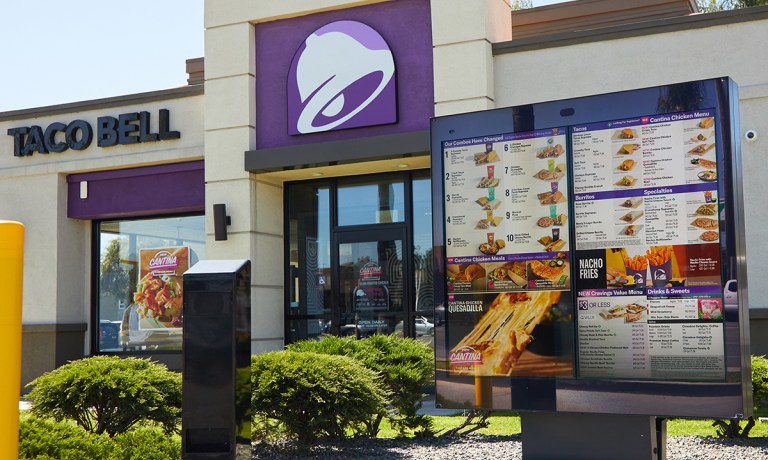
By year’s end, hundreds of Taco Bell drive-thrus could be taking orders without a human on the other end of the speaker. Yum Brands’ ambitious deployment of artificial intelligence (AI) at its flagship Mexican-style fast food chain signals a potential sea change in how America grabs its quick bites.
The initiative outpaces similar efforts by rivals Wendy’s and White Castle. Yum Brands aims to implement AI-powered ordering systems across the United States and globally.
“The AI voice technology would enable standardization of the customer journey and experience, which can then be compared across branches globally,” Alina Timofeeva, an expert in technology and data risk, told PYMNTS.
Taco Bell joins a growing cadre of quick service restaurants, traditional restaurants and delivery services which have been testing the technology to streamline the ordering process. Food delivery services like Uber Eats and DoorDash are using AI chatbots to personalize customer recommendations and improve ordering.
Last December, McDonald’s said it is partnering with Google Cloud to use AI to streamline operations and enhance customer experiences. The fast-food giant plans to implement AI in back-of-house tasks and launch new digital platforms in 2024. But a test of AI tech in drive-thrus was halted recently and the company plans to take another look at the program.
For their part, consumers seem to be open to idea of food ordering with AI, according to the PYMNTS Intelligence study, “How Consumers Want To Live In The Voice Economy.” That data shows nearly 40% of consumers believe voice recognition technology will be as advanced as human conversation within five years; and 63% say they would use voice now if it were as capable as a person, because it is easier and more convenient.
At Taco Bell, the AI experiment began in 2021 with just five locations. By May 2023, 30 California restaurants were using the technology. Over 100 of Taco Bell’s nearly 7,700 U.S. locations now employ AI order-takers, with hundreds more slated to join by December.
According to Lawrence Kim, Yum Brands’ chief innovation officer, two years of testing form the foundation for the company’s confidence. Reports indicate improved order accuracy and reduced wait times, addressing key industry pain points. In 2022, the average drive-thru wait across major chains stretched to 6 minutes and 13 seconds, up from 5 minutes and 57 seconds in 2021, SeeLevel HX reported.
Timofeeva paints a picture of AI’s potential to transform Taco Bell’s operations from top to bottom. The technology could dissect customer satisfaction, pinpointing exactly what delights or frustrates diners — whether it’s long wait times, high prices or limited menu options. These insights would cascade to staff, enabling teams to refine customer interactions.
Beyond the counter, AI’s influence could extend to the menu, revealing which items sell well and why, Timofeeva said. This data-driven approach promises a Taco Bell more responsive to customers’ tastes and expectations, potentially revolutionizing the fast-food experience. By helping firms understand customer preferences, improve staff performance and optimize the product lineup, AI could help Taco Bell serve a more satisfying meal, literally and figuratively.
The financial implications are significant for Taco Bell, which says it saw global system-wide sales of $14 billion in 2022. This technology promises to address labor shortages and rising wages while potentially boosting sales through automated upselling.
Yet Timofeeva cautions against overlooking the human element. “To minimize the complaints, there needs to be sufficient staff available to deal with any concerns and ensure continued customer satisfaction,” she said.
Taco Bell’s late entry into AI-powered ordering may prove advantageous. The company can learn from the struggles of early adopters like McDonald’s, which recently scrapped its decade-long experiment with IBM’s automated system. Timofeeva suggests this timing could allow Taco Bell to sidestep common pitfalls and capitalize on recent technological advances. Moreover, she said, the company can benefit from evolving standards in AI ethics and risk management, potentially avoiding the ethical quandaries and technical hiccups that have plagued earlier attempts in the industry.
Success in this AI implementation could set a new standard for the fast-food industry, where drive-thrus account for 70% of sales at quick-service restaurants, according to QSR Magazine. Yet challenges remain, including privacy concerns and the need to accommodate customers who prefer human interaction.
For all PYMNTS AI coverage, subscribe to the daily AI Newsletter.